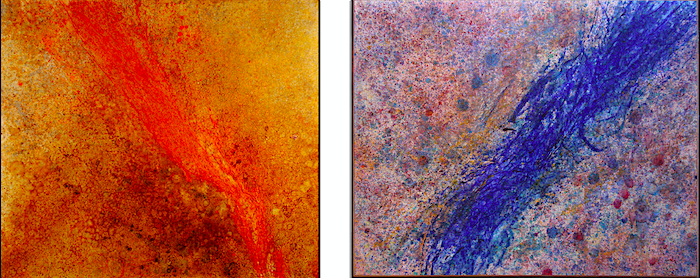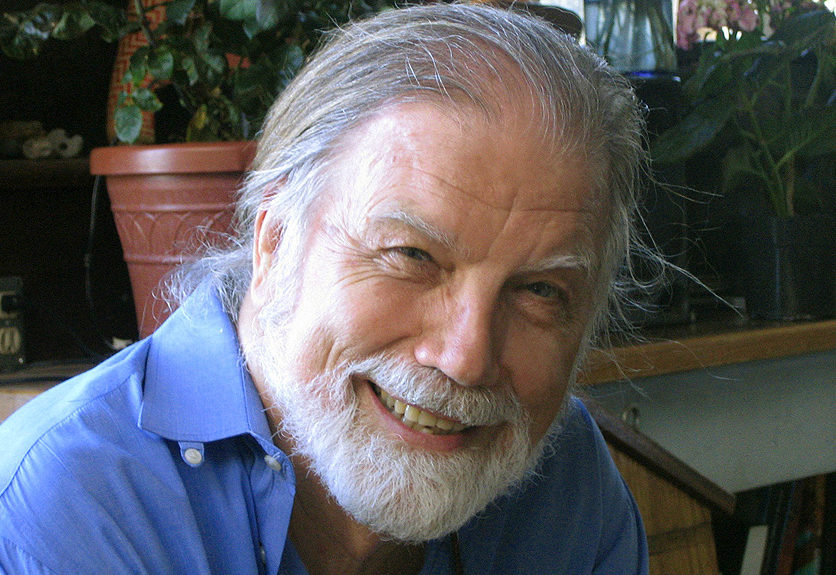Muldoon Elder is well known as the founder of The Vorpal Gallery, which for more than four decades was a leader introducing and building the careers of artists who were relatively unknown. He operated venues in both San Francisco and New York, and two of the discoveries he brought to America became household names in the art world, ranking among the greatest printmakers of the 20th century. M.C. Escher [1898–1972] was a master of the woodblock print and stone lithographics whose surreal images of tessellated hyperbolic geometry continue to command fascination. Yozo Hamaguchi [1909–2000] is widely recognized as the greatest master of the mezzotint with his superbly delicate still life images.
In 1961 Muldoon was an impecunious painter who left behind a cabin in the mountains north of Los Angeles and made the move to San Francisco. There, on a dare he opened The Vorpal Gallery, which became a vital part of the Bay Area art scene for the next 42 years. From the beginning, he championed lesser-known artists and was the art editor of the avant-garde literary magazine, Genesis West. His writing was highly respected, and in 1966 the prominent art historian John Rewald wrote, “I’ve always read his letters to me to my classes. His ground-breaking theories are not only exciting but quite likely true.”

Muldoon only occasionally exhibited his own paintings but he always received laudatory reviews, which led to exhibitions in numerous museums as well as an invitation to exhibit at the prestigious São Paulo Trianale. In 1964 a critic for Artforum reviewing an exhibition of his paintings felt that his “psychological optics” produced “hallucinatory undulances of after-image feedback.” In 1968 a review by Thomas Albright, the prominent critic for the San Francisco Chronicle, wrote that his abstractions were “cosmic landscapes, and, like most things of cosmic magnitude, they are also introspective nature poetry, which are tightly wefted tapestries that sing with movement, space, and a remarkably sensuous colorism… But the real life of these paintings lies in the elusive, changing forms which emerge out of the mote-filled spaces.”
By the end of the decade, although he continued to paint, Muldoon withdrew from exhibiting his art altogether in favor of focusing on filmmaking. In 1969, his second film, “The Magic Machines” won an Academy Award for Best Live Action Short as well as the top prize in that category at The Cannes Film Festival. His next film, released in 1973, was “Bright Tempest,” and it won 11 international film awards (ten golds and one silver). The next year, Mudoon opened his New York branch of The Vorpal Gallery in SoHo. Always continuing to paint, he has found himself moving idiosyncratically back-and-forth between abstract expressionism and a complex geometric figurative abstraction.
Peter Selz, the famous Curator of MoMA and later founder of the Berkeley Art Museum, wrote, “His paintings are ravishing!”
John Maxon, the Director of the Art Institute of Chicago, wrote that his work was “Total genius.”

Henry T. Hopkins, the museum director long recognized for playing a pivotal role in role in establishing the art scenes in both San Francisco and Los Angeles, wrote: “Muldoon Elder is one of my absolutely favorite, though relatively unknown, San Francisco artists. His brilliant and innovative paintings and drawings frankly put the works of many more recognized artists to abysmal shame. I’m amazed and also impressed that he has been content and even pleased to remain in the relative shadows of our known art world.”
Despite many people being aware of Elder’s work, in 1969 he took his paintings off the market altogether. He rarely exhibited them until recently. Therefore, relatively few people have ever had the pleasure of seeing the paintings of this artist, poet, critic, and filmmaker who can be described at once as brilliant, inscrutable, and irascible.

